Practical Machine
Learning
A New Look at Anomaly Detection
Ted Dunning &
Ellen Friedman
�
Sandbox
®
Fast
The first drag-and-drop
sandbox for Hadoop
Free
Fully-functional virtual
machine for Hadoop
Easy
Point-and-click tutorials
walk you through
the Hadoop experience
www.mapr.com/sandboxML
Use the Sandbox to tackle
anomaly detection
as described in the book!
�
Practical Machine Learning
A New Look at Anomaly Detection
Ted Dunning and Ellen Friedman
�
Practical Machine Learning
by Ted Dunning and Ellen Friedman
Copyright © 2014 Ellen Friedman and Ted Dunning. All rights reserved.
Printed in the United States of America.
Published by O’Reilly Media, Inc., 1005 Gravenstein Highway North, Sebastopol, CA
95472.
O’Reilly books may be purchased for educational, business, or sales promotional use.
Online editions are also available for most titles (http://my.safaribooksonline.com). For
more information, contact our corporate/institutional sales department: 800-998-9938
or corporate@oreilly.com.
Editor: Mike Loukides
June 2014:
First Edition
Revision History for the First Edition:
2014-05-14: First release
See http://oreilly.com/catalog/errata.csp?isbn=9781491904084 for release details.
Nutshell Handbook, the Nutshell Handbook logo, and the O’Reilly logo are registered
trademarks of O’Reilly Media, Inc. Practical Machine Learning: A New Look at Anom‐
aly Detection and related trade dress are trademarks of O’Reilly Media, Inc.
Many of the designations used by manufacturers and sellers to distinguish their prod‐
ucts are claimed as trademarks. Where those designations appear in this book, and
O’Reilly Media, Inc. was aware of a trademark claim, the designations have been printed
in caps or initial caps.
Photos are copyright Ellen Friedman.
While every precaution has been taken in the preparation of this book, the publisher
and authors assume no responsibility for errors or omissions, or for damages resulting
from the use of the information contained herein.
ISBN: 978-1-491-90408-4
[LSI]
�
Table of Contents
1. Looking Toward the Future. . . . . . . . . . . . . . . . . . . . . . . . . . . . . . . . . . . . 1
2. The Shape of Anomaly Detection. . . . . . . . . . . . . . . . . . . . . . . . . . . . . .
7
Finding “Normal” 8
If you enjoy math, read this description of a probabilistic
model of “normal”… 10
Human Insight Helps 11
Finding Anomalies 12
Once again, if you like math, this description of anomalies
is for you… 13
Take-Home Lesson: Key Steps in Anomaly Detection 14
A Simple Approach: Threshold Models 14
3. Using t-Digest for Threshold Automation. . . . . . . . . . . . . . . . . . . . . .
15
The Philosophy Behind Setting the Threshold 17
Using t-Digest for Accurate Calculation of Extreme
Quantiles 19
Issues with Simple Thresholds 20
4. More Complex, Adaptive Models. . . . . . . . . . . . . . . . . . . . . . . . . . . . . . 23
Windows and Clusters 25
Matches with the Windowed Reconstruction: Normal
Function 28
Mismatches with the Windowed Reconstruction:
Anomalous Function 30
A Powerful But Simple Technique 32
iii
�
Looking Toward Modeling More Problematic Inputs 34
5. Anomalies in Sporadic Events. . . . . . . . . . . . . . . . . . . . . . . . . . . . . . . .
35
Counts Don’t Work Well 36
Arrival Times Are the Key 38
And Now with the Math… 40
Event Rate in a Worked Example: Website Traffic Prediction 41
Extreme Seasonality Effects 43
6. No Phishing Allowed!. . . . . . . . . . . . . . . . . . . . . . . . . . . . . . . . . . . . . . . 47
The Phishing Attack 47
The No-Phishing-Allowed Anomaly Detector 49
How the Model Works 50
Putting It All Together 51
7. Anomaly Detection for the Future. . . . . . . . . . . . . . . . . . . . . . . . . . . . . 53
A. Additional Resources. . . . . . . . . . . . . . . . . . . . . . . . . . . . . . . . . . . . . . . . 57
iv
|
Table of Contents
�
CHAPTER 1
Looking Toward the Future
Everyone loves a mystery, and at the heart of it, that’s what anomaly
detection is—spotting the unusual, catching the fraud, discovering the
strange activity. Anomaly detection has a wide range of useful appli‐
cations, from banking security to natural sciences to medicine to mar‐
keting. Anomaly detection carried out by a machine-learning program
is actually a form of artificial intelligence. With the ever-increasing
volume of data and the new types of data, such as sensor data from an
increasingly large variety of objects that needs to be considered, it’s no
surprise that there also is a growing interest in being able to handle
more decisions automatically via machine-learning applications. But
in the case of anomaly detection, at least some of the appeal is the
excitement of the chase itself.
1
�
Figure 1-1. Finding anomalies is the detective work of machine
learning.
When are anomaly-detection methods a good choice? Unlike fictional
detective stories, in anomaly detection, you may not have a clear sus‐
pect to search for, and you may not even know what the “crime” is. In
fact, one way to think about when to turn to anomaly detection is this:
Anomaly detection is about finding what you don’t know to look for.
You are searching for anomalies, but you don’t know what their char‐
acteristics will be. If you did, you could use a different form of machine
learning, called classification, or you would just write specific rules to
find the anomalies. But that’s not generally where you start.
Classification is a form of supervised learning where you have exam‐
ples of each kind of thing you are looking for. You apply a learning
algorithm to these examples to build a model that can use features of
new data to classify them into categories that represent each kind of
data of interest. When you have examples of normal and some number
of abnormal situations, classifers can help you mark new situations as
normal or abnormal. Even when you know about some kinds of
anomalies, it is always good to keep an eye out for new kinds that you
don’t know about. That is where anomaly detection is applied.
2
|
Chapter 1: Looking Toward the Future
�
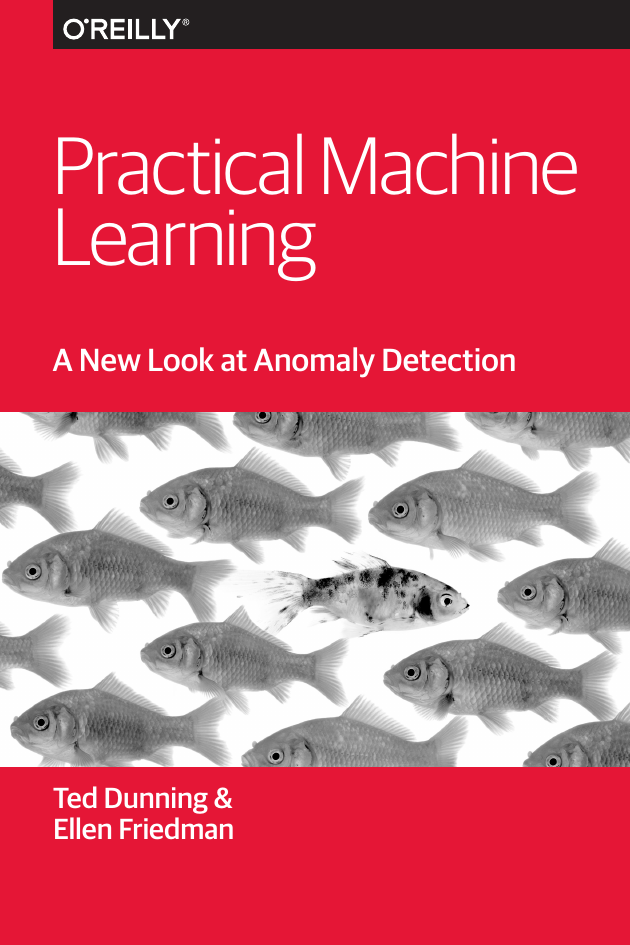
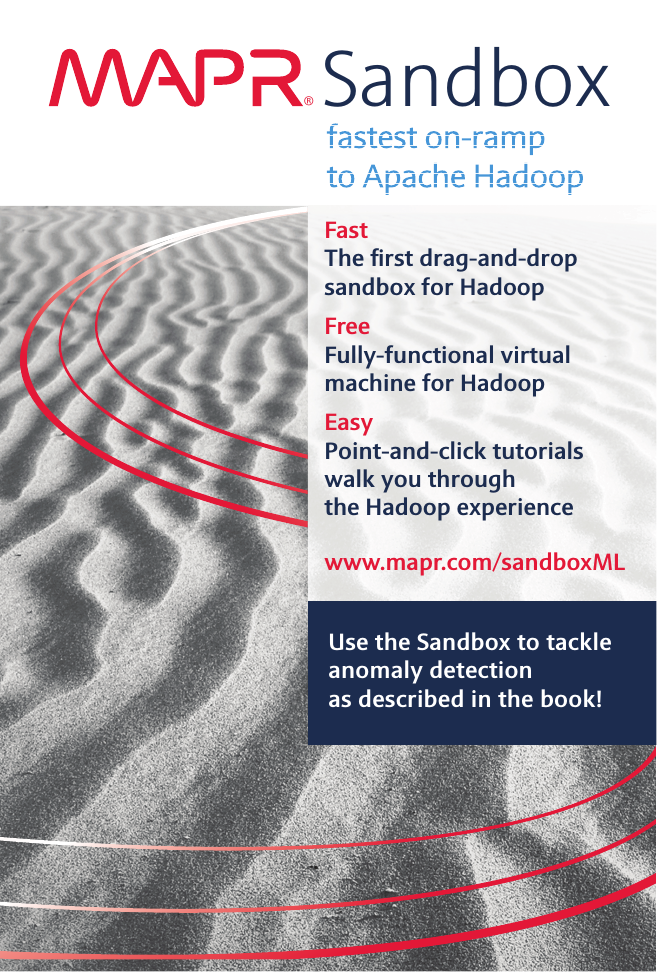
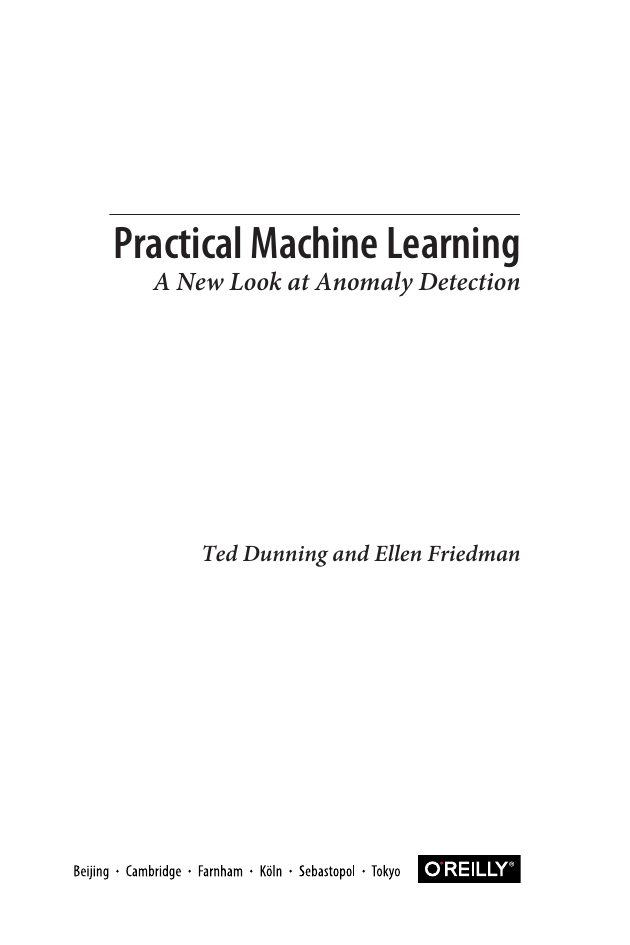

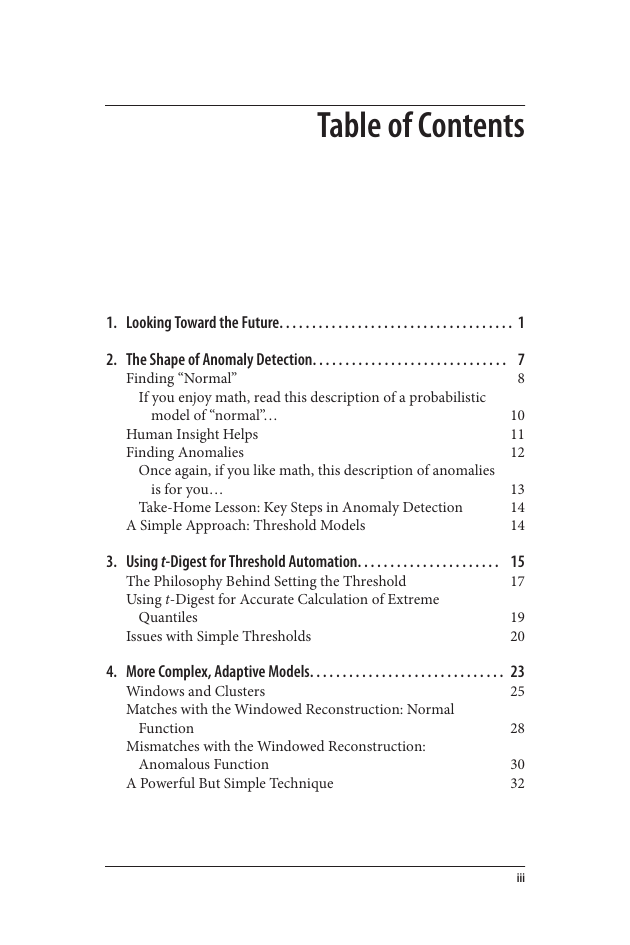
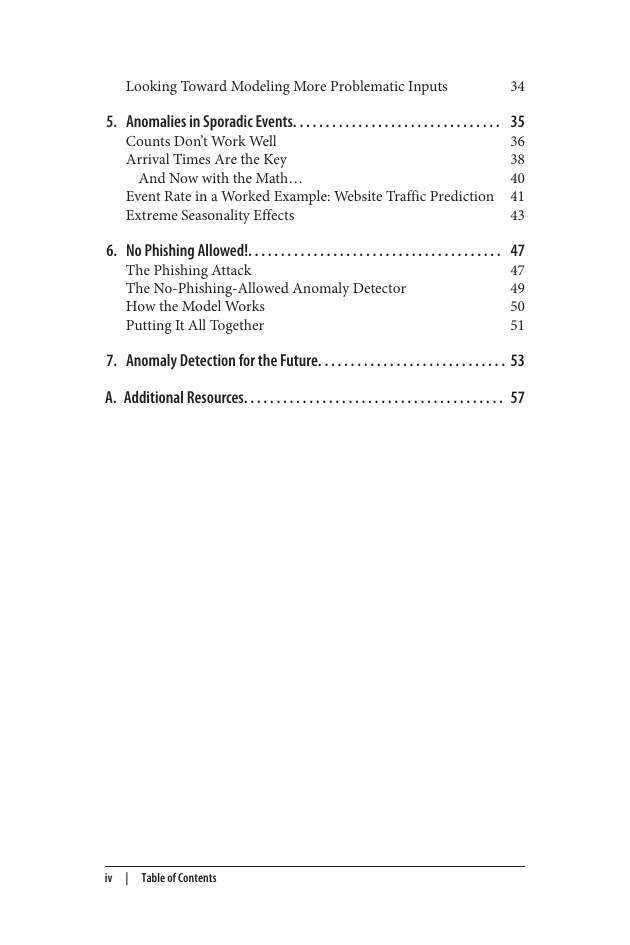










 2023年江西萍乡中考道德与法治真题及答案.doc
2023年江西萍乡中考道德与法治真题及答案.doc 2012年重庆南川中考生物真题及答案.doc
2012年重庆南川中考生物真题及答案.doc 2013年江西师范大学地理学综合及文艺理论基础考研真题.doc
2013年江西师范大学地理学综合及文艺理论基础考研真题.doc 2020年四川甘孜小升初语文真题及答案I卷.doc
2020年四川甘孜小升初语文真题及答案I卷.doc 2020年注册岩土工程师专业基础考试真题及答案.doc
2020年注册岩土工程师专业基础考试真题及答案.doc 2023-2024学年福建省厦门市九年级上学期数学月考试题及答案.doc
2023-2024学年福建省厦门市九年级上学期数学月考试题及答案.doc 2021-2022学年辽宁省沈阳市大东区九年级上学期语文期末试题及答案.doc
2021-2022学年辽宁省沈阳市大东区九年级上学期语文期末试题及答案.doc 2022-2023学年北京东城区初三第一学期物理期末试卷及答案.doc
2022-2023学年北京东城区初三第一学期物理期末试卷及答案.doc 2018上半年江西教师资格初中地理学科知识与教学能力真题及答案.doc
2018上半年江西教师资格初中地理学科知识与教学能力真题及答案.doc 2012年河北国家公务员申论考试真题及答案-省级.doc
2012年河北国家公务员申论考试真题及答案-省级.doc 2020-2021学年江苏省扬州市江都区邵樊片九年级上学期数学第一次质量检测试题及答案.doc
2020-2021学年江苏省扬州市江都区邵樊片九年级上学期数学第一次质量检测试题及答案.doc 2022下半年黑龙江教师资格证中学综合素质真题及答案.doc
2022下半年黑龙江教师资格证中学综合素质真题及答案.doc